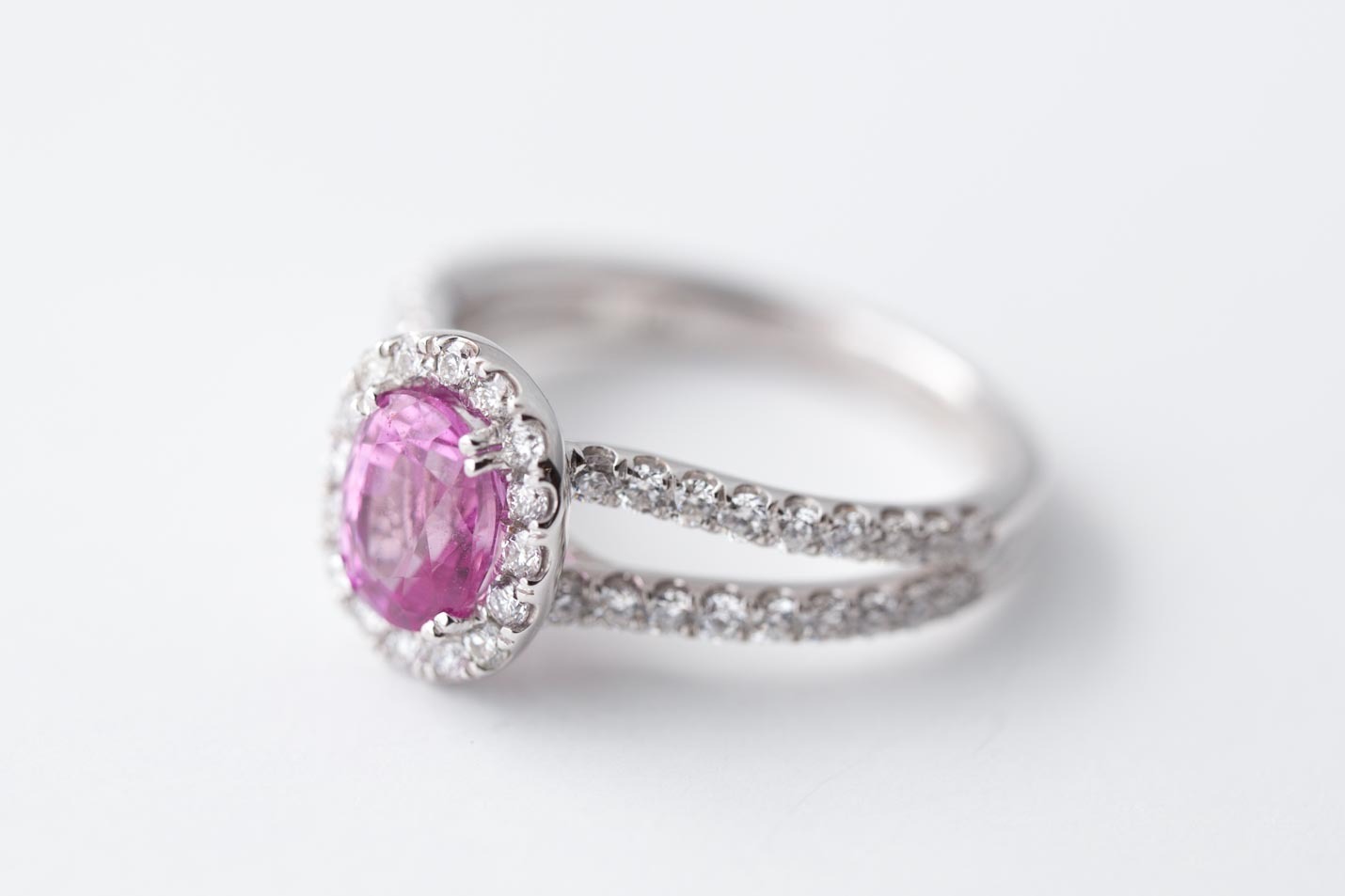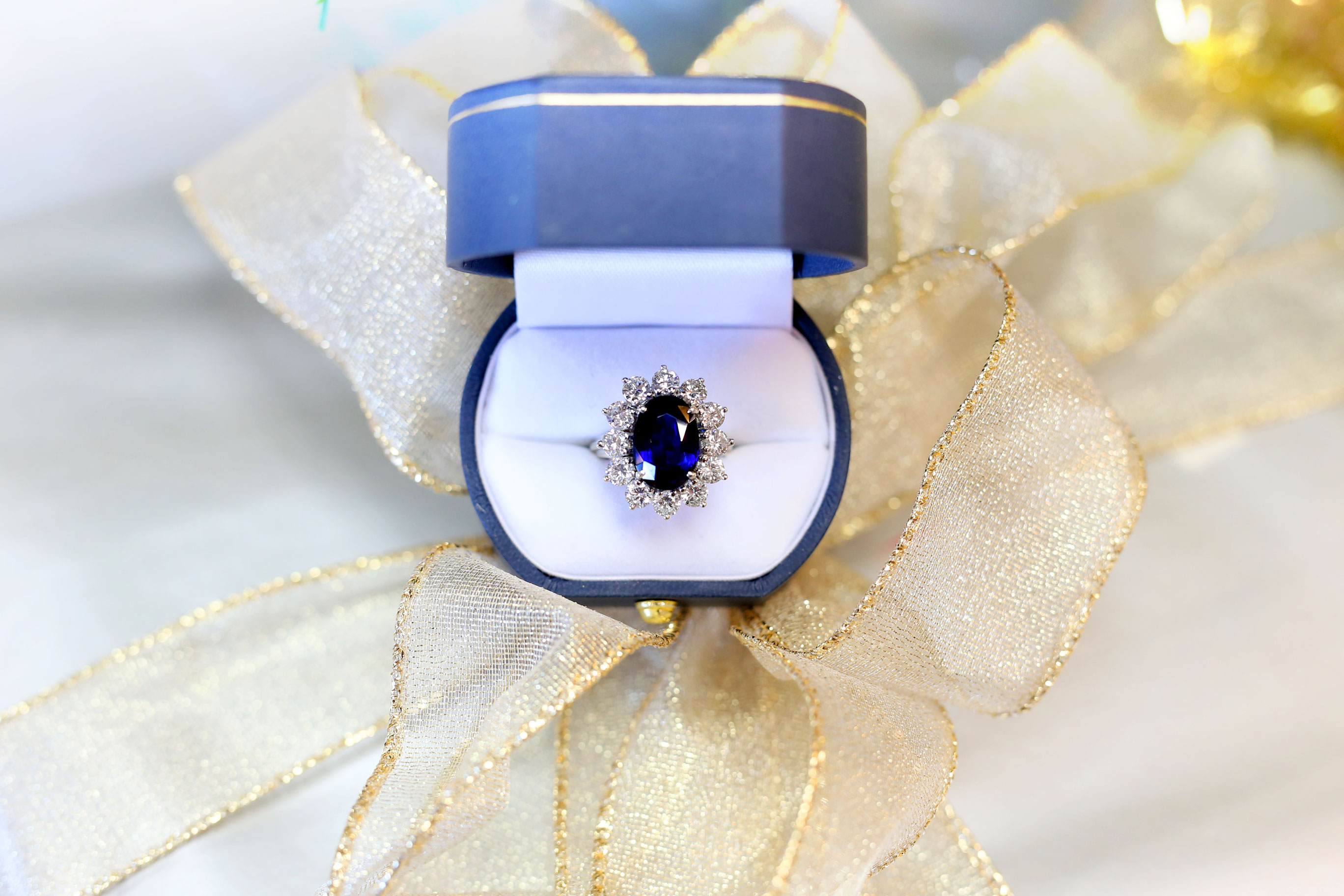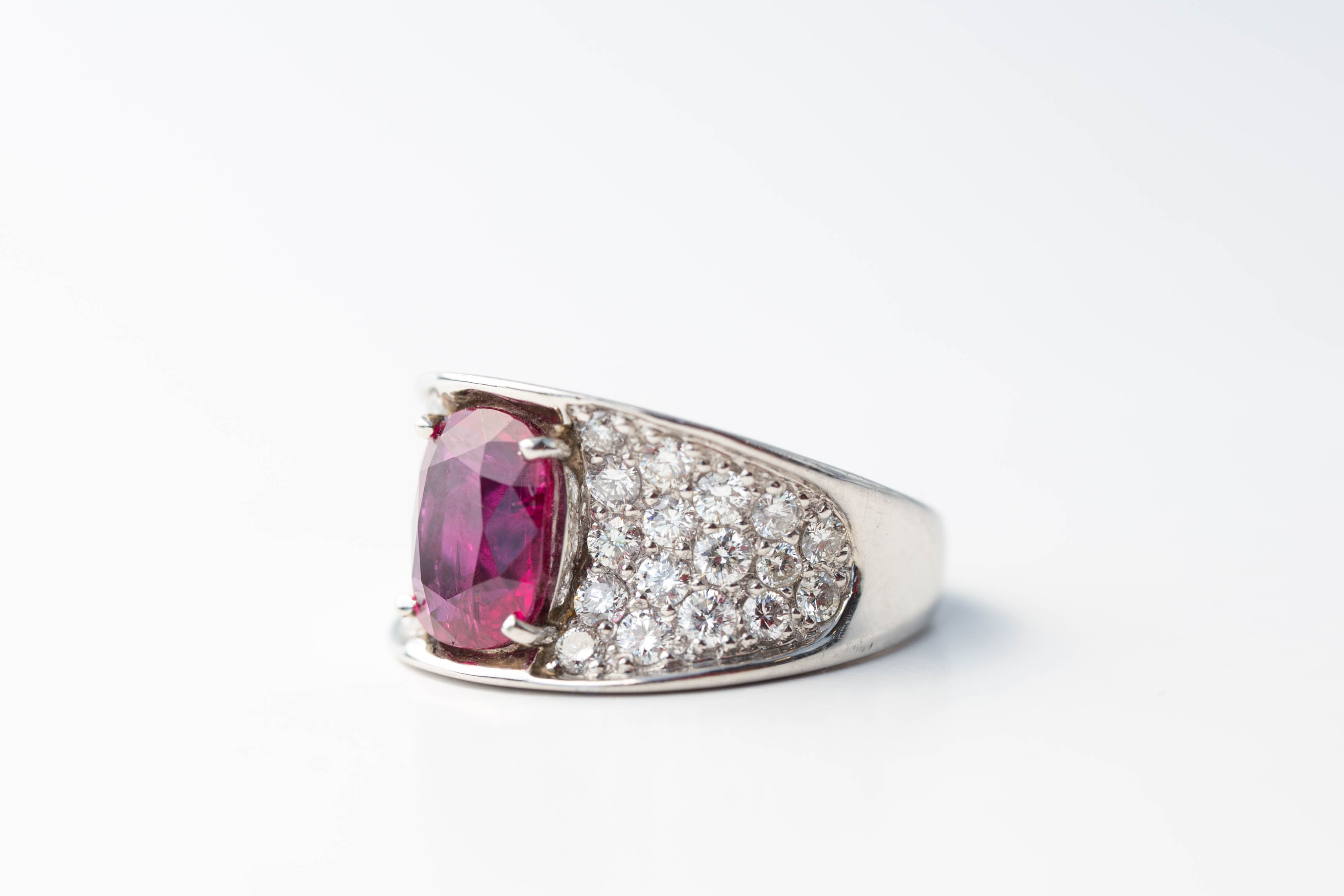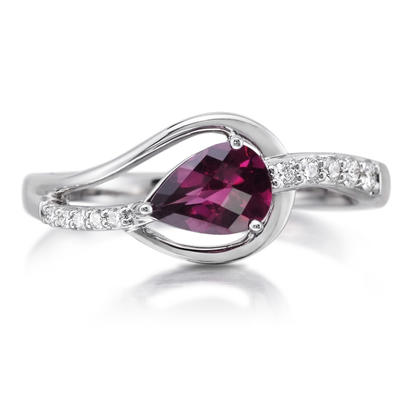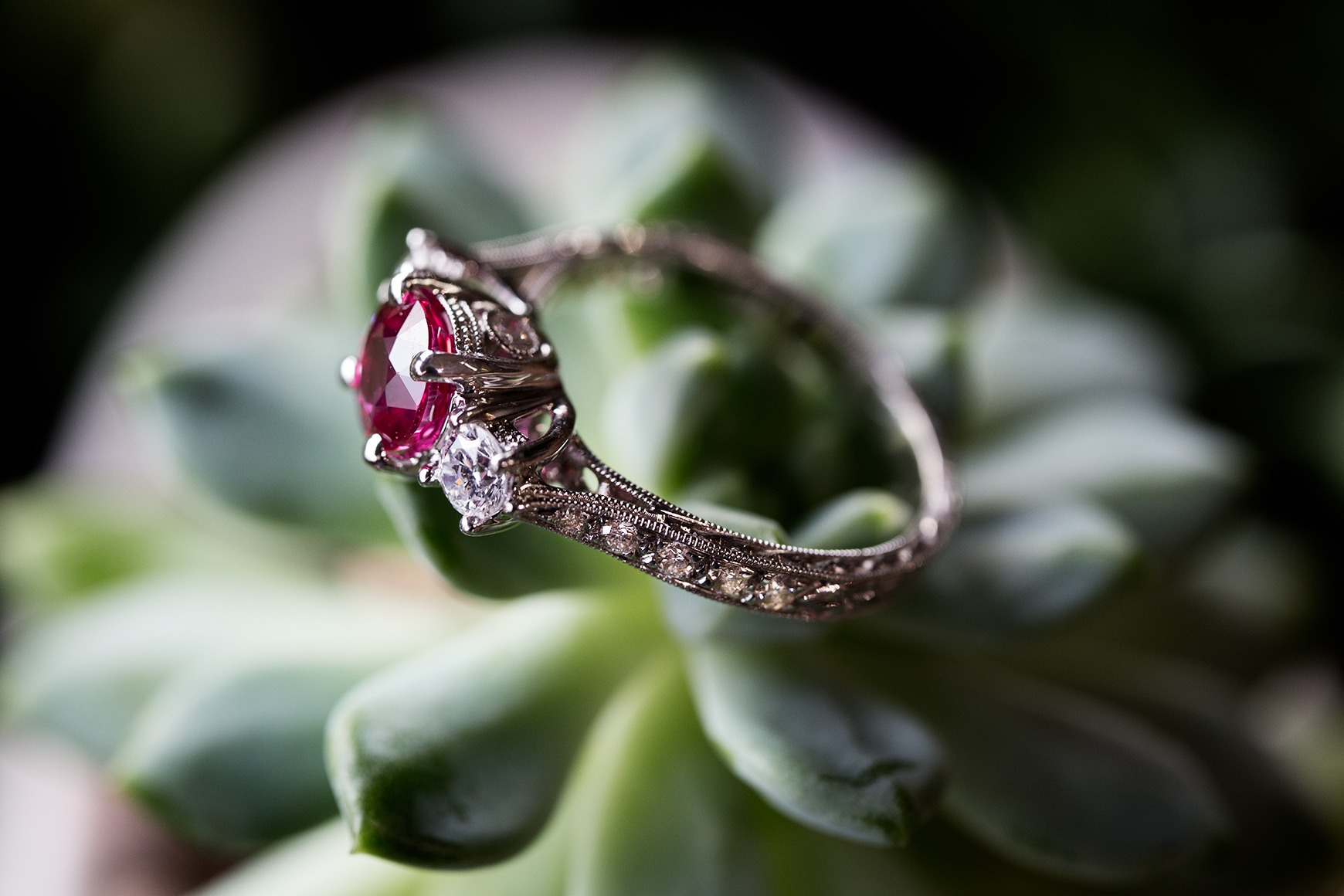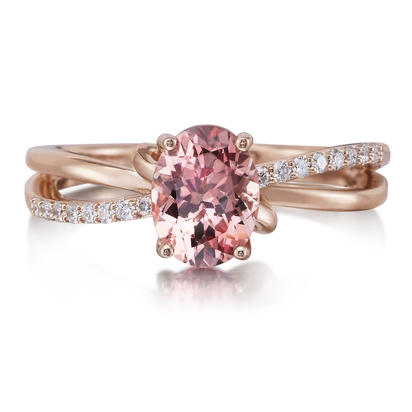What comes to mind when someone says “engagement ring?” A classic tiffany solitaire? An oval halo with diamonds down the side? What about a sapphire? Or a ruby? Many people don’t realize that diamond engagement rings have only been popular for about a century.
Before the Diamond Rush and the rise of De Beers and their exceptional global marketing skills, it was common for ladies to wear engagement rings with a variety of center stones: Blue topaz, sapphire, spinel, even ruby or emerald.
If you’re not sure if a diamond engagement ring is right for you, you may be interested in having your forever ring made with a breathtaking blue sapphire or a perfectly polished padparadscha.
Hardness and Toughness
When choosing a gemstone for everyday wear, two important things must be taken into consideration: Hardness and Toughness.
In gemology, hardness refers to a stones resistance to scratching. You may have seen older gemstones that look almost “blurry” where the facets meet, or heard of colored stones being referred to as “abraded.” This is because of lots and lots of micro-scratches over time wearing down the vibrance of the stone.
Equally unlucky are those whose gemstone has one big scratch across the top, creating a distraction from the unique beauty of the stone. The harder a stone is, the longer it will shine without having to go to the lapidarist for re-polishing.
The hardness of a stone is represented by the Mohs Scale. However, even though diamond is a 10 on the Mohs scale, the hardest gem or the most resistant to scratching, and sapphire is a 9 on the Mohs scale, a diamond (10) is 140 times harder than a sapphire (9), but a sapphire (9) is not 140 times harder than topaz (8).
Toughness is a term that refers to a gemstone’s resistance to breaking and chipping. In some ways, this is even more important that the gemstones hardness or how it ranks on the Mohs scale, because this particular type of damage to a stone can’t always be remedied.
It is important to choose a gemstone that is both hard and tough. Topaz, for example, is relatively hard, but it is not tough. Here are the colored stones that we recommend for an engagement ring.
Gemstones
Sapphire.
Mohs Hardness : 9, Toughness : Excellent
It was good enough for Princess Diana, so what more is there to say? Sapphire is an excellent choice for an engagement ring, and if taken care of well it can become a treasured heirloom for years to come. Sapphire is also the most flexible choice because it comes in a variety of colors: Blue, Green, Purple, Pink, and more!
Ruby
Mohs Hardness : 9, Toughness : Excellent
Ruby and Sapphire are two varieties of the same mineral. The only real difference between them worth noting is color, so ruby has the same durability and longevity as sapphire.
Alexandrite
Mohs Hardness : 8.5, Toughness : Excellent
One of the best conversation starters in the gem world, alexandrite has strong pleochroism, which means it shows different colors when observed at different angles. It grabs attention, and if taken care of will also last long enough to be passed down for generations.
Pink Stones
Morganite
Mohs Hardness 7.5 – 8, Toughness: Good
This pink variety of beryl surged in popularity a few years ago and still makes the top ten list of commonly requested engagement gems. However, there are risk associated with this stone–so if it’s the soft, pink hue that you’re looking for, a pink sapphire may be a better alternative. If it’s the price you like, Morganite and Lotus Garnet are both affordable and beautiful options.
Pink Sapphire
Mohs Hardness : 9, Toughness : Excellent
We can’t say enough good things about sapphire. It’s valuable, durable, and alluring. The shades of pink sapphire can range from light baby pink to rich, vivid magenta.
Lotus Garnet
Mohs Hardness : 6.5 – 7.5, Toughness: Fair
More than just a January birthstone, this gem is the perfect choice for someone looking for a truly unique stone. Recently discovered in 2015, this new (to the market) jewel is a rare and mysterious stone. The unique orangey pink color resembles padparadscha sapphire, but at a much lower price.
For more information, check out these links:
https://4cs.gia.edu/en-us/blog/more-than-mohs-scale-gem-durability/
http://hperryjewelers.jewelershowcase.com/browse/gemstones
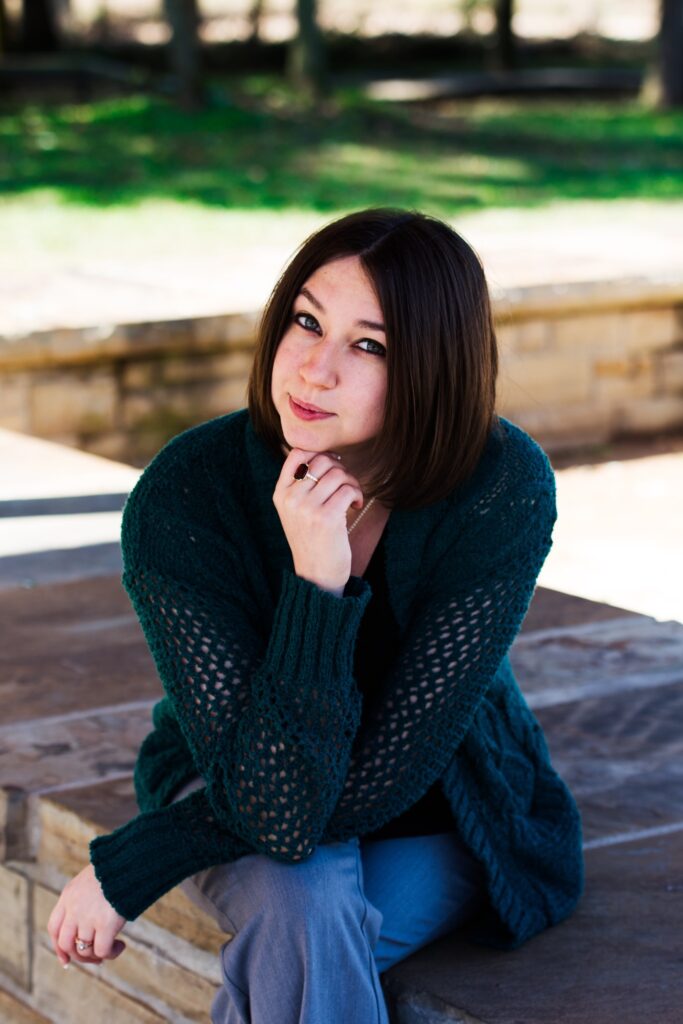
Jordan Rayne
GIA Diamonds Graduate, GIA AJP
Designer and Consultant for HPerry Jewelers since 2013

